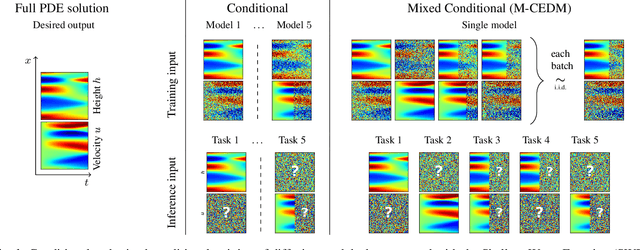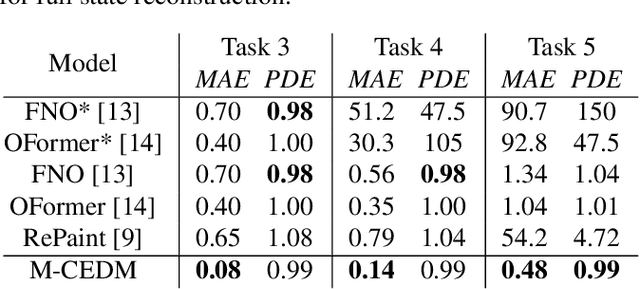Pekka Marttinen
New multimodal similarity measure for image registration via modeling local functional dependence with linear combination of learned basis functions
Mar 07, 2025Abstract:The deformable registration of images of different modalities, essential in many medical imaging applications, remains challenging. The main challenge is developing a robust measure for image overlap despite the compared images capturing different aspects of the underlying tissue. Here, we explore similarity metrics based on functional dependence between intensity values of registered images. Although functional dependence is too restrictive on the global scale, earlier work has shown competitive performance in deformable registration when such measures are applied over small enough contexts. We confirm this finding and further develop the idea by modeling local functional dependence via the linear basis function model with the basis functions learned jointly with the deformation. The measure can be implemented via convolutions, making it efficient to compute on GPUs. We release the method as an easy-to-use tool and show good performance on three datasets compared to well-established baseline and earlier functional dependence-based methods.
Memento No More: Coaching AI Agents to Master Multiple Tasks via Hints Internalization
Feb 03, 2025Abstract:As the general capabilities of artificial intelligence (AI) agents continue to evolve, their ability to learn to master multiple complex tasks through experience remains a key challenge. Current LLM agents, particularly those based on proprietary language models, typically rely on prompts to incorporate knowledge about the target tasks. This approach does not allow the agent to internalize this information and instead relies on ever-expanding prompts to sustain its functionality in diverse scenarios. This resembles a system of notes used by a person affected by anterograde amnesia, the inability to form new memories. In this paper, we propose a novel method to train AI agents to incorporate knowledge and skills for multiple tasks without the need for either cumbersome note systems or prior high-quality demonstration data. Our approach employs an iterative process where the agent collects new experiences, receives corrective feedback from humans in the form of hints, and integrates this feedback into its weights via a context distillation training procedure. We demonstrate the efficacy of our approach by implementing it in a Llama-3-based agent which, after only a few rounds of feedback, outperforms advanced models GPT-4o and DeepSeek-V3 in a taskset requiring correct sequencing of information retrieval, tool use, and question answering.
Towards modeling evolving longitudinal health trajectories with a transformer-based deep learning model
Dec 12, 2024Abstract:Health registers contain rich information about individuals' health histories. Here our interest lies in understanding how individuals' health trajectories evolve in a nationwide longitudinal dataset with coded features, such as clinical codes, procedures, and drug purchases. We introduce a straightforward approach for training a Transformer-based deep learning model in a way that lets us analyze how individuals' trajectories change over time. This is achieved by modifying the training objective and by applying a causal attention mask. We focus here on a general task of predicting the onset of a range of common diseases in a given future forecast interval. However, instead of providing a single prediction about diagnoses that could occur in this forecast interval, our approach enable the model to provide continuous predictions at every time point up until, and conditioned on, the time of the forecast period. We find that this model performs comparably to other models, including a bi-directional transformer model, in terms of basic prediction performance while at the same time offering promising trajectory modeling properties. We explore a couple of ways to use this model for analyzing health trajectories and aiding in early detection of events that forecast possible later disease onsets. We hypothesize that this method may be helpful in continuous monitoring of peoples' health trajectories and enabling interventions in ongoing health trajectories, as well as being useful in retrospective analyses.
Query-Guided Self-Supervised Summarization of Nursing Notes
Jul 04, 2024Abstract:Nursing notes, an important component of Electronic Health Records (EHRs), keep track of the progression of a patient's health status during a care episode. Distilling the key information in nursing notes through text summarization techniques can improve clinicians' efficiency in understanding patients' conditions when reviewing nursing notes. However, existing abstractive summarization methods in the clinical setting have often overlooked nursing notes and require the creation of reference summaries for supervision signals, which is time-consuming. In this work, we introduce QGSumm, a query-guided self-supervised domain adaptation framework for nursing note summarization. Using patient-related clinical queries as guidance, our approach generates high-quality, patient-centered summaries without relying on reference summaries for training. Through automatic and manual evaluation by an expert clinician, we demonstrate the strengths of our approach compared to the state-of-the-art Large Language Models (LLMs) in both zero-shot and few-shot settings. Ultimately, our approach provides a new perspective on conditional text summarization, tailored to the specific interests of clinical personnel.
Identifying latent state transition in non-linear dynamical systems
Jun 06, 2024Abstract:This work aims to improve generalization and interpretability of dynamical systems by recovering the underlying lower-dimensional latent states and their time evolutions. Previous work on disentangled representation learning within the realm of dynamical systems focused on the latent states, possibly with linear transition approximations. As such, they cannot identify nonlinear transition dynamics, and hence fail to reliably predict complex future behavior. Inspired by the advances in nonlinear ICA, we propose a state-space modeling framework in which we can identify not just the latent states but also the unknown transition function that maps the past states to the present. We introduce a practical algorithm based on variational auto-encoders and empirically demonstrate in realistic synthetic settings that we can (i) recover latent state dynamics with high accuracy, (ii) correspondingly achieve high future prediction accuracy, and (iii) adapt fast to new environments.
Video-Language Critic: Transferable Reward Functions for Language-Conditioned Robotics
May 30, 2024Abstract:Natural language is often the easiest and most convenient modality for humans to specify tasks for robots. However, learning to ground language to behavior typically requires impractical amounts of diverse, language-annotated demonstrations collected on each target robot. In this work, we aim to separate the problem of what to accomplish from how to accomplish it, as the former can benefit from substantial amounts of external observation-only data, and only the latter depends on a specific robot embodiment. To this end, we propose Video-Language Critic, a reward model that can be trained on readily available cross-embodiment data using contrastive learning and a temporal ranking objective, and use it to score behavior traces from a separate reinforcement learning actor. When trained on Open X-Embodiment data, our reward model enables 2x more sample-efficient policy training on Meta-World tasks than a sparse reward only, despite a significant domain gap. Using in-domain data but in a challenging task generalization setting on Meta-World, we further demonstrate more sample-efficient training than is possible with prior language-conditioned reward models that are either trained with binary classification, use static images, or do not leverage the temporal information present in video data.
Kernel Language Entropy: Fine-grained Uncertainty Quantification for LLMs from Semantic Similarities
May 30, 2024Abstract:Uncertainty quantification in Large Language Models (LLMs) is crucial for applications where safety and reliability are important. In particular, uncertainty can be used to improve the trustworthiness of LLMs by detecting factually incorrect model responses, commonly called hallucinations. Critically, one should seek to capture the model's semantic uncertainty, i.e., the uncertainty over the meanings of LLM outputs, rather than uncertainty over lexical or syntactic variations that do not affect answer correctness. To address this problem, we propose Kernel Language Entropy (KLE), a novel method for uncertainty estimation in white- and black-box LLMs. KLE defines positive semidefinite unit trace kernels to encode the semantic similarities of LLM outputs and quantifies uncertainty using the von Neumann entropy. It considers pairwise semantic dependencies between answers (or semantic clusters), providing more fine-grained uncertainty estimates than previous methods based on hard clustering of answers. We theoretically prove that KLE generalizes the previous state-of-the-art method called semantic entropy and empirically demonstrate that it improves uncertainty quantification performance across multiple natural language generation datasets and LLM architectures.
Generating Code World Models with Large Language Models Guided by Monte Carlo Tree Search
May 24, 2024Abstract:In this work we consider Code World Models, world models generated by a Large Language Model (LLM) in the form of Python code for model-based Reinforcement Learning (RL). Calling code instead of LLMs for planning has the advantages of being precise, reliable, interpretable, and extremely efficient. However, writing appropriate Code World Models requires the ability to understand complex instructions, to generate exact code with non-trivial logic and to self-debug a long program with feedback from unit tests and environment trajectories. To address these challenges, we propose Generate, Improve and Fix with Monte Carlo Tree Search (GIF-MCTS), a new code generation strategy for LLMs. To test our approach, we introduce the Code World Models Benchmark (CWMB), a suite of program synthesis and planning tasks comprised of 18 diverse RL environments paired with corresponding textual descriptions and curated trajectories. GIF-MCTS surpasses all baselines on the CWMB and two other benchmarks, and we show that the Code World Models synthesized with it can be successfully used for planning, resulting in model-based RL agents with greatly improved sample efficiency and inference speed.
Diffusion models as probabilistic neural operators for recovering unobserved states of dynamical systems
May 11, 2024



Abstract:This paper explores the efficacy of diffusion-based generative models as neural operators for partial differential equations (PDEs). Neural operators are neural networks that learn a mapping from the parameter space to the solution space of PDEs from data, and they can also solve the inverse problem of estimating the parameter from the solution. Diffusion models excel in many domains, but their potential as neural operators has not been thoroughly explored. In this work, we show that diffusion-based generative models exhibit many properties favourable for neural operators, and they can effectively generate the solution of a PDE conditionally on the parameter or recover the unobserved parts of the system. We propose to train a single model adaptable to multiple tasks, by alternating between the tasks during training. In our experiments with multiple realistic dynamical systems, diffusion models outperform other neural operators. Furthermore, we demonstrate how the probabilistic diffusion model can elegantly deal with systems which are only partially identifiable, by producing samples corresponding to the different possible solutions.
Improving Medical Multi-modal Contrastive Learning with Expert Annotations
Mar 15, 2024Abstract:We introduce eCLIP, an enhanced version of the CLIP model that integrates expert annotations in the form of radiologist eye-gaze heatmaps. It tackles key challenges in contrastive multi-modal medical imaging analysis, notably data scarcity and the "modality gap" -- a significant disparity between image and text embeddings that diminishes the quality of representations and hampers cross-modal interoperability. eCLIP integrates a heatmap processor and leverages mixup augmentation to efficiently utilize the scarce expert annotations, thus boosting the model's learning effectiveness. eCLIP is designed to be generally applicable to any variant of CLIP without requiring any modifications of the core architecture. Through detailed evaluations across several tasks, including zero-shot inference, linear probing, cross-modal retrieval, and Retrieval Augmented Generation (RAG) of radiology reports using a frozen Large Language Model, eCLIP showcases consistent improvements in embedding quality. The outcomes reveal enhanced alignment and uniformity, affirming eCLIP's capability to harness high-quality annotations for enriched multi-modal analysis in the medical imaging domain.
 Add to Chrome
Add to Chrome Add to Firefox
Add to Firefox Add to Edge
Add to Edge